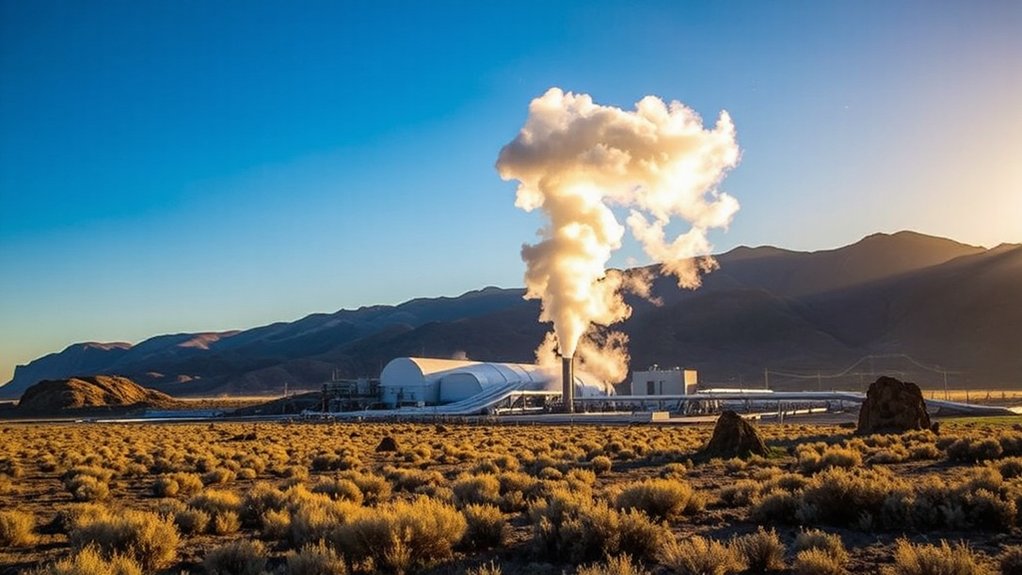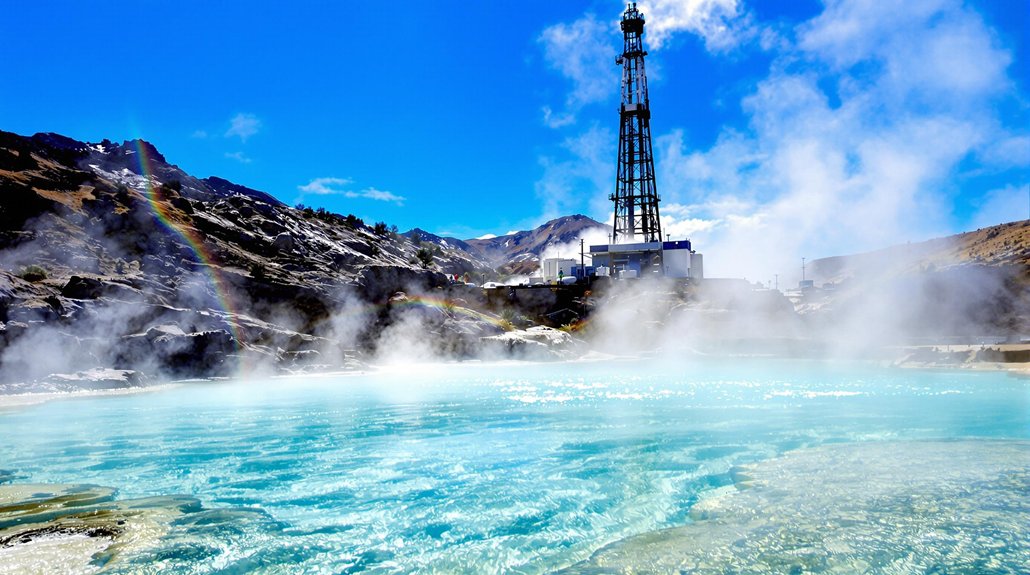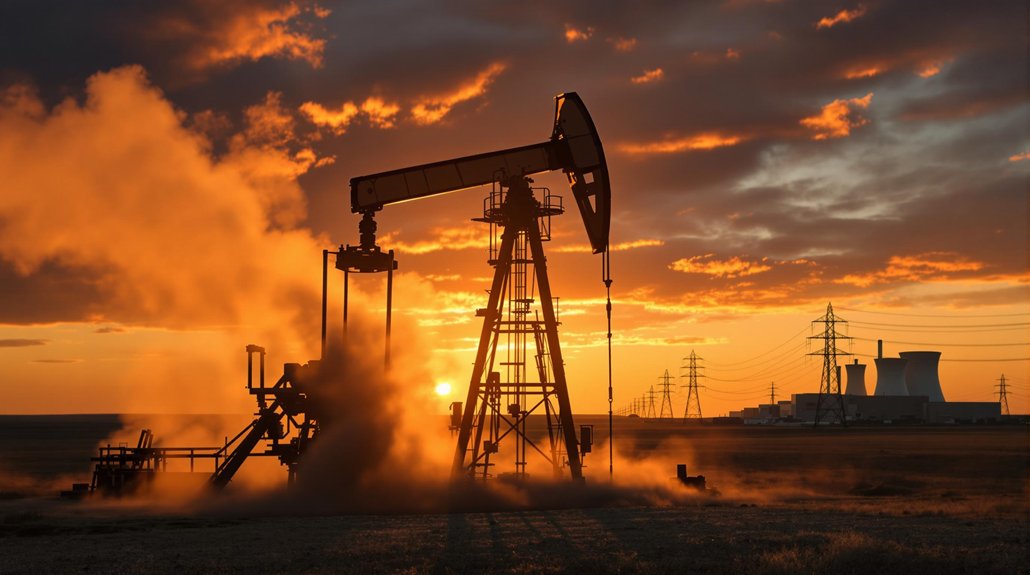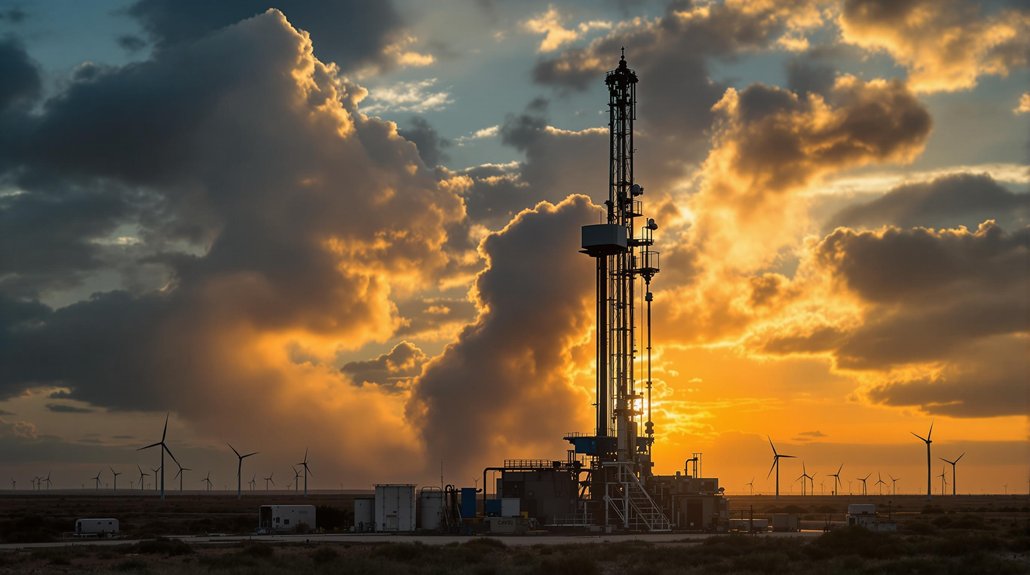While solar panels glitter across California’s rooftops and wind turbines spin along its ridgelines, another renewable powerhouse churns quietly beneath the surface. Geothermal energy—Earth’s natural heat—supplies about 4% of California’s electricity. Not exactly headline-grabbing, but it’s honest work.
The feds just auctioned off geothermal leases for a cool $2.7 million. Chump change for Silicon Valley, but a big deal for energy wonks. California dominates the nation’s geothermal scene, producing 70% of utility-scale geothermal electricity. That’s 1,900 megawatts of steamy, subterranean power.
While Silicon Valley sneezes billions, the feds celebrate a $2.7M geothermal auction in California—home to 70% of America’s Earth-powered electricity.
The Geysers, tucked in the Mayacamas Mountains, reigns as the world’s largest geothermal complex. At 725 MW, it’s like having a nuclear reactor without all that pesky radiation. Meanwhile, the Salton Sea area is heating up with new exploration. Literally.
Geothermal isn’t cheap. Building these plants costs around $4,350 per kilowatt at the best sites—more than double what natural gas costs. Lower temperature sites? Up to $18,956 per kilowatt. Ouch.
Yet California keeps pushing. They just handed the Paskenta Band of Nomlaki Indians $32 million for a solar/geothermal microgrid. Nice gesture after, you know, everything else we did to them.
In California’s energy mix, geothermal competes with bigger players. Solar struts at 20%, nuclear hums at 7%, and hydro flows at 11%. Natural gas still dominates at 32%. Geothermal’s slice? A modest 4%. With 44 operational projects generating about 12,000 GWhs annually, geothermal is a steady contributor to the state’s energy portfolio.
But here’s why geothermal matters: it never stops. Unlike solar (useless at night) or wind (calm days happen), geothermal churns 24/7. Engineers call it “firm power.” Normal people call it “electricity that works when you need it.” The technology’s impressive 96% capacity factor makes it one of the most reliable energy sources available.
With California electrifying everything from cars to toasters, demand will skyrocket. The state has identified 115 potential geothermal sites. That’s serious untapped potential—14,909 MW worth. California’s underground heat wave might just be getting started. Combined with other renewables, geothermal helps push the state toward its goal of 50% low-carbon electricity generation.
References
- https://www.thinkgeoenergy.com/some-statistical-highlights-from-geothermal-energy-in-california/?noamp=mobile
- https://lowcarbonpower.org/region/California
- https://www.catf.us/resource/unlocking-californias-geothermal-potential/
- https://www.eia.gov/state/analysis.php?sid=CA
- https://atb.nrel.gov/electricity/2024/geothermal








